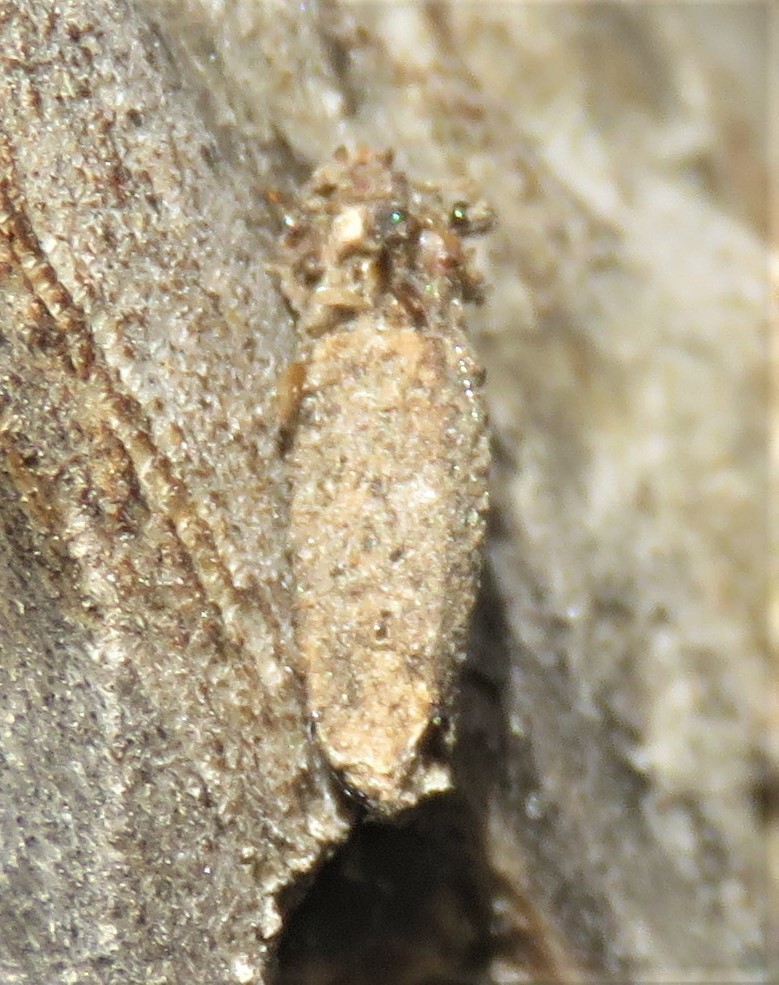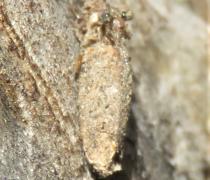Genus Dahlica
I often see these bagworm larvae climbing the spruce stump and exterior walls in the early spring. Although I can't be sure, they are most like the Narrow Lichen Case-bearer (Dahlica triquetrella). Here is what BugGuide says about them:
North American population is parthenogenic (females reproducing by laying viable eggs not fertilized by a male). Eggs are layed in discarded bag in early spring soon after adult emerges from pupa and bag. Adult lives only a few days and does not eat. Caterpillars eat and grow till fall, then find a place (often seen on the sides of buildings) to spend the winter without pupating. In very early spring, as temperatures rise to a degree or two above freezing, the caterpillar pupates.
Caterpillars attach a variety of objects to their silken bags, including dead plant parts, dead animal parts, or grains of sand.
I'm pretty sure this is Dahlica triquetrella since the cases are triangular in cross-section.

- Links
- Western Weeta: I can't believe it's a moth
- iNaturalist
- BugGuide
- Catalogue of the Lepidoptera of Belgium: Dahlica triquetrella
- Investigating the origin of parthenogenesis and ploidy level in Dahlica fennicella
- Phylogeny and evolution of parthenogenesis in Finnish bagworm moth species (Lepidoptera: Psychidae: Naryciinae) based on mtDNA-markers
- Asexuality alone does not explain the success of clonal forms in insects with geographical parthenogenesis
- Evolution and Ecological Aspects of Parthenogenetic and Sexual Bagworm Moths
- Pre- and post-mating reproductive barriers drive divergence of five sympatric species of Naryciinae moths
- BionomicsofBagworms (Lepidoptera:Psychidae)
- The Logic of Sex



